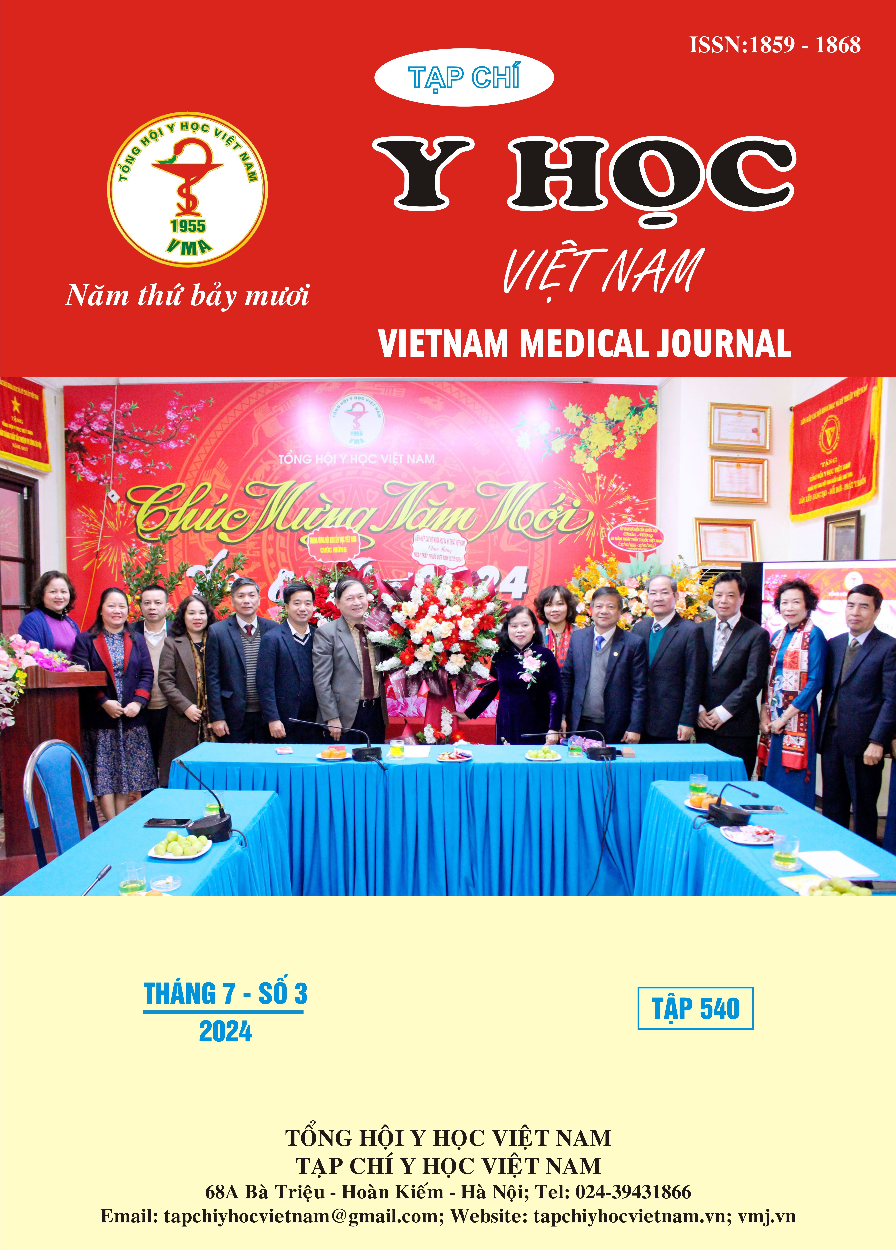INJURY CHARACTERISTICS AND OUTCOMES OF CORONARY ARTERY INTERVENTION WITH ATHERECTOMY USING ROTABLATOR IN PATIENTS WITH CORONARY ARTERY DISEASE AT A MULTI-SPECIALTY IN KIEN GIANG PROVINCIAL GENERAL HOSPITAL
Main Article Content
Abstract
Background: Transradial coronary artery intervention is the most commonly used method for revascularization in coronary artery disease. Since 2020, Kien Giang Provincial General Hospital has equipped the Rotablator atherectomy system and has been gradually implementing this procedure for indicated patients. Objectives: Surveying the characteristics of injury and treatment outcomes of coronary artery intervention with Rotablator atherectomy in patients with coronary artery disease at Kien Giang Provincial General Hospital. Materials and methods: We selected 260 patients with coronary artery disease (CAD), including 40 patients indicated for Rotablator atherectomy for coronary atherosclerosis. Results: The average age of the study population was 67,33 ± 10,34 years, with males accounting for 55,8%. The majority of patients had a history of hypertension (84,9%) and coronary artery disease (70,4%). CCS class III angina was present in 50,8% of cases, and 78,2% had no heart failure. Single-vessel, two-vessel, and three-vessel coronary artery disease were observed in 37,7%, 24,2%, and 38,1% of cases, respectively, with 65,8% showing no calcification. The most common lesion location was the left anterior descending artery (86,9%), followed by the right coronary artery (67,7%) and circumflex artery (55,8%). Rotablator atherectomy was initially performed in 87,5% of patients. The transradial approach was used in 99,6% of cases, with 6F guiding catheters in 99,2%. All patients used a single burr, with a 1,25 mm size in 87,5% of cases. The mean drilling speed was 181750 ± 4425,31 rotations per minute, and the total drilling time averaged 53,1 ± 23,29 seconds. Treatment success rate was 100%, with few complications observed during the procedure. Conclusion: The majority of patients with coronary artery disease have complex lesions involving multiple coronary arteries. All patients with coronary artery disease who underwent Rotablator atherectomy intervention were successful, with few complications observed during the procedure.
Article Details
Keywords
Coronary artery disease (CAD), coronary atherosclerosis, Rotablator (RA), coronary arteries.
References
2. Nguyễn Hữu Tuấn, Mạnh Hùng Phạm, Nhật Minh Phạm và cộng sự. Kết quả của thủ thuật khoan phá mảng xơ vữa vôi hoá động mạch vành bằng Rotablator tại Viện Tim mạch Việt Nam, Bệnh viện Bạch Mai. Tạp chí Tim mạch học Việt Nam. 2024.108, 31-45.
3. Phạm Gia Khải và cộng sự. Khuyến cáo can thiệp động mạch vành qua da. Hội Tim mạch học Việt Nam. 2008.
4. Bộ Y tế. Hướng dẫn quy trình kỹ thuật nội khoa chuyên nghành Tim mạch. Nhà xuất bản Y học. 2017.
5. Nguyễn Minh Nguyệt, Trần Viết An, Phạm Thanh Phong. Kết quả chụp cắt lớp vi tính đa dãy động mạch vành trên bệnh nhân nghi ngờ bệnh tim thiếu máu cục bộ mạn tính tại Bệnh viện Đột quỵ Tim mạch Cần Thơ năm 2020. Tạp chí Y Dược học Cần Thơ. 2021.39, 199-203.
6. Vũ Hoàng Vũ, Nguyễn Công Thành, Nguyễn Xuân Vinh và cộng sự. Đánh giá an toàn và hiệu quả của khoan cắt mảng xơ vữa vôi hóa bằng Rotablator trong can thiệp động mạch vành qua da. Tạp chí Tim mạch học Việt Nam. 2021.97, 101-112.
7. Kawamoto H., Azeem L., Neil R. và cộng sự. Planned versus provisional rotational atherectomy for severe calcified coronary lesions: Insights From the ROTATE multi‐center registry. Catheterization and Cardiovascular Interventions. 2016.88(6), 881-889.
8. Kotajärvi J., Anna-Maija T., Juha H. và cộng sự. Correlation of the disease-specific Canadian Cardiovascular Society (CCS) classification and health-related quality of life (15D) in coronary artery disease patients. PloS one. 2022.17(4), e0266101.
9. Levine G.N., Bates E.R., Blankenship J.C. và cộng sự. 2011 ACCF/AHA/SCAI Guideline for Percutaneous Coronary Intervention: executive summary: a report of the American College of Cardiology Foundation/American Heart Association Task Force on Practice Guidelines and the Society for Cardiovascular Angiography and Interventions. Catheter Cardiovasc Interv. 2012.79(3), 453-495.
10. Moussa I., Di Mario C., Moses J. và cộng sự. Coronary stenting after rotational atherectomy in calcified and complex lesions. Angiographic and clinical follow-up results. Circulation. 1997.96(1), 128-136.


